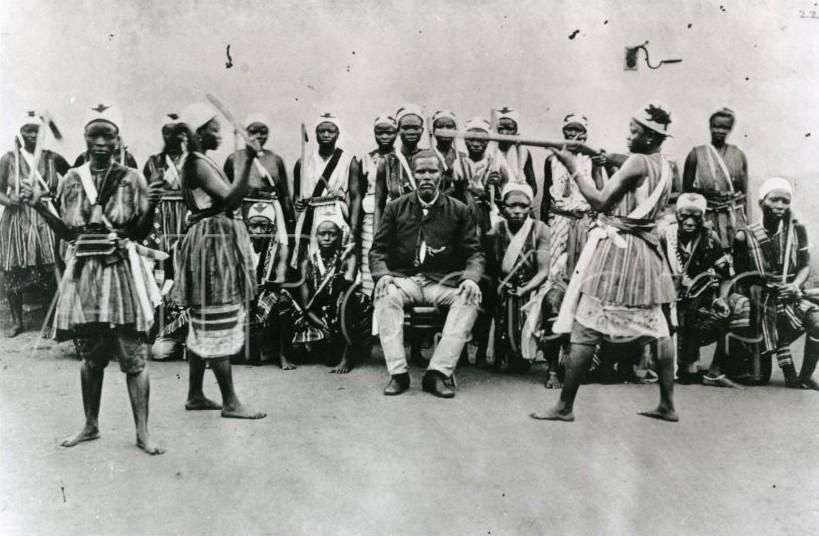The amazons of Dahomey: Legend of Benin's fearless female warriors
)
The ones that fought bravely alongside men? Well, they aren't entirely fictional. The characters of these warrior women were inspired by the Amazons of Dahomey, a fierce, all-female arm of the Dahomey army.
Female warriors may be quite strange in many cultures around the world, but not in the ancient Kingdom of Dahomey.
Dahomey, now modern-day Benin located in West Africa, was once a formidable empire that ruled over its neighbors and fought many wars. Many of their greatest warriors were women.
This army comprising of only females were said to be so merciless, that European colonists referred to them as the 'Amazons' after the great female warriors of Greek mythology.
There are various accounts of how they emerged. According to local legend, Queen Hangbe is the founder of this elite group of female warriors. But other sources claim that King Houegbadja a king who began his reign in 1645 and ruled for 40 years.
He initially started the group as a tactical unit of hunters referred to the Gbeto; this hunters specialty were elephants. However, under King Ghezo ( 1818-1858), the Amazons became an essential part of the kingdom's military.
During the time of his reign, Gozo made many military reforms, and the army became very important. One of the reasons he made such a move was because human resources had become scarce due to the European slave trade.
By the middle of the nineteenth century, the women soldiers of Dahomey made up 30 to 40 percentage of the army, with a estimated number of thousands. They were also called the Mino (our Mothers) or Ahosi (king's wives).
They were all officially married to the king and stayed in a reserved area of the palace. They were also wealthy and held high status.
The women were major weapons that saw to the defeat of neighboring kingdoms during war, often taking captives for the slave trade, putting Dahomey in the spotlight for this very lucrative venture.

Amazons began training from a young age, loading and shooting guns and swinging blades and knives. The women's army had three main wings: the left-wing, and right-wing and the Fanti which was referred to as the elite centre wing.
Everyone of these wings had five subgroups. The first was the Gbeto, also called Huntresses. They were initially a corps of elephant huntress. Then the Gulohento, these were the Riflewomen.
All of them had a short sword and long rifle and were great fighters when it came to close duels. While some were armed with short swords, others with spears. Also, the Reapers , natively called the Nyekplohento, were not many but were very much feared.
They had razor-sharp knives which were believed to have the ability to slice a man in two in a single action. There were also the Gohento, who were Archers. These women were deadly with bows and arrows; their hooked and poisoned arrows were shot with precision.
And finally, the Agbalya, also called Gunners. They used the army's artillery, which included the German Krupp guns and old iron guns the Europeans sold to the Kingdom of Dahomey.
Nearly 2,000 Amazons died during the two-year war with France. Only about 50 women are believed to have survived and faded into the colonized system. There is little to no trace of them left in Abomey (the kingdom's former capital). The last of the Amazons are said to have died in the 1970s.
The Dahomey Amazons symbolize the strength and resilience of African women and the great influence and authority they commanded in times past. Even though the Amazons of Dahomey still exist in Benin, these women simply have ceremonial positions.
Nonetheless, these warrior women will always hold a strong stake in the rich heritage of this great West African Empire.
)
)
![The health benefits of ginger and garlic are unbelievable [Food NDTV]](https://image.api.sportal365.com/process/smp-images-production/pulse.ng/01082024/200694f2-3977-47a4-a142-89c80fe6766e?operations=autocrop(236:157))
)
![10 countries where prostitution is legal. [Source - scoop]](https://image.api.sportal365.com/process/smp-images-production/pulse.ng/31072024/5eda0369-74f6-4a3b-82f7-d7dab249c8ac?operations=autocrop(236:157))
![Tribal marks of Nigerian people and what they mean. [guardian]](https://image.api.sportal365.com/process/smp-images-production/pulse.ng/01082024/45e8c254-ebf2-4262-b639-c83e8b56a32e?operations=autocrop(236:157))
)
)
)
)
)
)
)
)
)
)